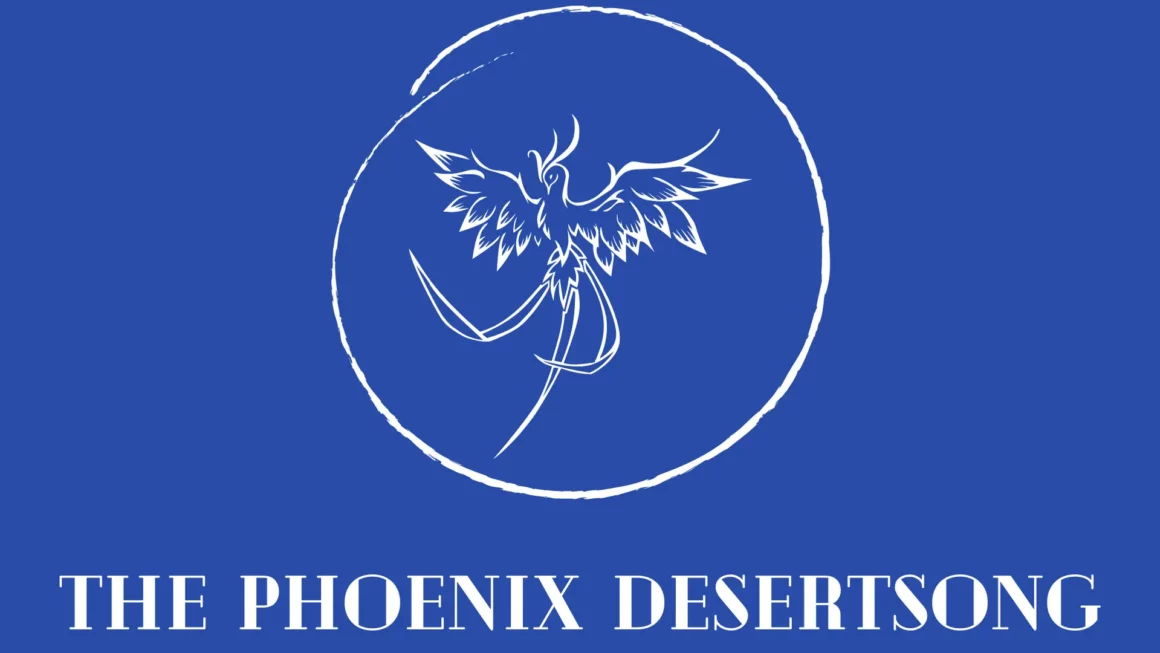Today, let’s take a moment to shine a light – a bright bluelight, to be exact – on our modern-day fixation with backlit screens. Our world has quietly become one in which we’ve become like a gentle flutter of moths to a warm flame, mirrored by our own unending ritual dance around the cool glow of our devices.
Most of us have made bluelight a daily bathing ritual, one performed in the quiet corners of coffee shops, in the dimly lit rooms of our homes, and even in bustling city streets. Many faces are illuminated not by the sun or the stars, but by the ever-present glow of screens. We’re often drawn deeply into the bright bluelight of our screens, often forgetting the world beyond.
This humorous juxtaposition isn’t just for laughs. Rather, it’s meant to remind us of the absurdity inherent in our daily lives. As we swipe, tap, and scroll, are we not just like those moths, entranced by the light? In a twist of fate that even Van Gogh couldn’t have painted, we find ourselves bathed not in starlight, but in bluelight. Instead of the night skies, we’re nightly peering into a digital cosmos that fits neatly into our palms.
The Absurdity of Our Screen-Dominated Lives
How did we come to live in this peculiar world where screens reign supreme? Unlike the ancient mariners whose eyes were constantly gazing upon the stars trying to find direction, our modern eyes are perpetually fixed on the luminescent glow of digital displays. These screens have become like our modern-day constellations. They guide us through the intricacies of daily life, from navigating the urban jungles to deciphering the complexities of human connections.
This cosmic comparison isn’t merely poetic; it’s a testament to how our reliance on screens has become as fundamental as the stars were to our ancestors. These rectangles of bluelight all around us are now how we navigate life, through pixels and light. Yet, unlike the celestial bodies that inspired awe and wonder, our screens often lead us into a labyrinth of endless scrolling and virtual escapades.
I myself confess to being ensnared in these bluelight spectacles. After all, I spend many hours of my own day staring into a series of bright rectangles of bluelight. From the moment I wake to the last bleary-eyed check of email at night, my whole world is often framed within the confines of these four-cornered spaces. This is typical for many folks of my Millennial generation, and even more true for younger generations.
Sadly, bluelight can be quite harsh on the eyes. It has a significant impact on our circadian rhythms, the natural cycles that regulate our sleep and wakefulness. Bluelight can also affect our mood, cognition, and alertness, depending on the timing and duration of exposure.
So, is it worth the price to our vision, both physically and mentally, to stay connected with the world? Oftentimes, my little conversations and musings over cellular networks and cable lines are all that get me through my day. Faced with endless streams of emails, text messages, breaking news, and various forms of digital entertainment, I’m part of a generation bathed in bluelight. Even my own rituals and routines are dictated by the silent hum of technology, whether I like it or not.
Yet, amidst this seemingly bleak portrayal of a blue lit world, there lies a silver lining. For someone who navigates the turbulent seas of neurodivergence and wrestles with ever-present specters of anxiety, these screens are more than just glowing rectangles. For me, they are a lifeline.
In the paradoxical world of Absurdia, digital connectivity emerges as a tool for managing the chaos of my mind. It’s through these screens that I, and many others, find solace, understanding, and a sense of belonging. They offer a platform for expression, a means to reach out when the weight of solitude becomes too burdensome.
So, as we contemplate the absurdity of our screen-dominated existence, let’s also acknowledge the strange comfort it can bring to those sailing in stormy mental waters. In this ballet of light and pixels, we find not just the greatest absurdity of our times, but also an unexpected ally in our quest for sanity and connection in the vast digital universe.
Bluelight Devices as a Creative Outlet and Benefit to Mental Health
Writing has emerged for me not just as a craft, but as a vital sanctuary for a tumultuous mind. Whenever I find myself alone with my thoughts, writing is usually the best outlet for my overwhelming deluge of thoughts. For me, the act of writing transcends mere self-expression; it becomes a voyage through the stormy seas of emotion. Each word I pen is like building a lighthouse guiding me through the fog of my own psyche.
In a world where my mind often feels like a ship adrift, writing anchors me to a semblance of stability. It allows me to navigate the unpredictable currents of neurodivergence and anxiety, transforming chaotic thoughts into structured narratives. This creative process isn’t just therapeutic, it’s a means of survival. It’s my way of charting a course through my internal tempests and emerge with a clearer vision of myself and the world around me.
Many of the stops my train of thought makes on its journey through Absurdia aren’t pleasant ones. Sometimes, I feel forced to have to go back and edit old scribblings, just to give myself something to do. I must keep my brain busy to retain some bit of sanity. Otherwise, I fear that tomorrow I’ll turn in on myself and never return to the living world, drowning in an endless reverie.
When it comes to managing my fears and my self-perception, my digital writing journey isn’t without its perils. One of most haunting fears is the dread of being misunderstood, of having my words — the very essence of my being — misconstrued as madness. This fear isn’t unfounded, for in my own life story, brilliance and insanity have treaded a fine line. I’ve long feared the appearance of white coats at my door. But, I know I’m not insane. I’m simply too brilliant for my own good; at least, that’s what I’ve been told.
It’s a daunting challenge to not constantly be second-guessing my thoughts, wondering how they’ll be perceived in the harsh light of societal judgment. So, I’m constantly walking on eggshells when it comes to expressing myself, especially in the harsh world of the internet blogosphere. In response to these societal pressures, my self-expression has evolved into an art of disguise. My true thoughts often find themselves cloaked in metaphors and allegories, like a protective shield of my true nature.
This necessity to veil my ideas leaves me at odds with trying to balance the desire to be understood with the need to protect my inner world from misinterpretation. With each new chapter of “Chronicles of Absurdia,” I constantly struggle with revealing enough to be relatable, yet concealing enough to safeguard my sanity and privacy. In this digital age, where every word can be scrutinized and every sentiment magnified, finding this balance is more crucial than ever.
So, as I pen these chronicles, I navigate not just the complexities of my own mind, but also the intricate web of societal expectations. In doing so, I hope to offer a glimpse into the absurdity of our times, where self-expression is both a liberating force and a guarded fortress. Perhaps, it’s for the best, as my fatigued and weakened physical condition has given me ample time to greatly enhance my skills as a writer. At least, my lovely readers, you can now appreciate what I go through on a daily basis through reading my words.
Strategies for Mental Well-Being
Often lost in the digital shuffle, mastering and constantly practicing the art of communication is vital for everyone’s mental well-being. Engaging in heartfelt, meaningful conversations is like opening the windows of a stuffy room, allowing fresh perspectives and insights to breeze through our minds.
These dialogues, whether with friends, family, therapists, or even strangers on the internet, serve as a crucial outlet for unburdening our souls from our often confusing inner dialogues. They provide a platform for us to voice our fears, share our joys, and navigate the complexities of our emotions.
But, more than just a means of expression, these open communications act as a lifeline. They connect us to the shared human experience, reminding us that we’re not alone in our absurd journey through life. I’ve always championed the power of words to heal, to connect, and to empower.
A major goal of these “Chronicles of Absurdia,” in fact, is to keep open dialogues with the right souls. I need to force myself to take time to truly and openly express my thought process, and stop procrastinating on my writing work. Meanwhile, I want to produce something that’s useful and thought-provoking for those who stumble upon my work.
Self-Care in the Digital Age
Effectively practicing self-care in the digital age is the foundation of mental well-being. So, it’s vital we make room for it in our lives, which are often dominated by the relentless buzz of notifications and the constant glare of screens. Recognizing the need for rest becomes not just important, but essential.
Practicing effective self-care means setting boundaries with our devices. We need to be able to step back and immerse ourselves in the physical world. So, it’s essential we balance in-person interactions with our engagement with the digital realm. We must not allow our screen time to eclipse our real-life experiences.
Achieving this balance can manifest in various forms: a walk in the park without your phone, a quiet evening with a book instead of a tablet, or a meditation session where the only sound is our breathing. Through such acts of self-care, we recharge not just our bodies, but also our minds. They enable us to return to our screens with renewed energy and a more balanced perspective.
So, as we navigate this absurd, screen-lit world, let’s remember to pause, communicate, and care for ourselves, transforming our daily experiences into a more harmonious and fulfilling life.
The 20-20-20 Rule
Today, let’s challenge ourselves with a simple yet effective practice known as the “20-20-20 Rule.” The concept is simple: every 20 minutes, take a break from your screen to look at something 20 feet away for a full 20 seconds. This brief pause allows your eyes to reset, reducing the strain caused by prolonged focus on digital displays. It’s like giving your eyes a short, rejuvenating vacation every 20 minutes.
So, try using the “20-20-20 Rule” throughout your day, particularly during work hours or extended periods of screen time. By integrating this rule into your daily routine, you should experience a noticeable improvement in focus. It should also reward you with a reduction in eye strain, and an overall boost in mental health.
This simple practice can transform your relationship with bluelight, turning a potential adversary into a manageable companion. As you implement this rule, observe the changes in how your eyes feel. Notice how your mind responds to this newfound rhythm of rest and focus.
As a bonus to further bolster the benefits of the “20-20-20 Rule,” I also encourage you to indulge in a tech-free activity. Set aside a specific time during your day to disconnect completely from digital devices. This could be anything from a peaceful walk in nature, engaging in a creative hobby like painting or handwriting,. It could simply sitting quietly and letting your thoughts wander.
These planned substantial breaks allow you to reconnect with the physical world and your inner self. This tech-free interlude is an opportunity to cultivate mindfulness, creativity, and a deeper sense of peace.As you engage in your chosen activity, reflect on the contrast between your digital and non-digital experiences. Observe how this brief escape from the digital world impacts your mental state and creativity.
Closing Thoughts
The ubiquitous bluelight in our lives has become a spectral companion so common it’s almost a part of the family. It’s sneakily infiltrated our lives like that guest who overstays their welcome, then decides to control the thermostat. But its impact isn’t just on our vision; bluelight can also be like a puppeteer of our sleep patterns, often pulling our strings late into the night, delaying our rendezvous with the sandman.
So, when it comes to navigating through the treacherous waters of endless scrolling, notifications, and binge-watching, it’s not about throwing our gadgets into the ocean. Rather, we should maybe learn to set them on ‘Do Not Disturb’ while we enjoy the actual sunset, not the one on our screensavers.
We need to be proactive in finding that sweet spot, where digital life doesn’t mean digital control. Behind every screen, there’s a real window. Sometimes, what’s happening outside that window is pretty important, too.
Think about your screen time. Are you a casual browser or a digital nomad, forever wandering the plains of the internet? How often do you look up from your screen and think, ‘Ah, another day well spent among pixels and light’? We need to regularly check in with ourselves, ensuring that our screen time is adding to our lives, not subtracting from our mental and physical health. After all, people aren’t just a collection of pixels, likes, shares, and comments. We’re beautifully complex humans who occasionally enjoy a good cat video — in moderation, of course.
~ Amelia Desertsong, January 31, 2024



